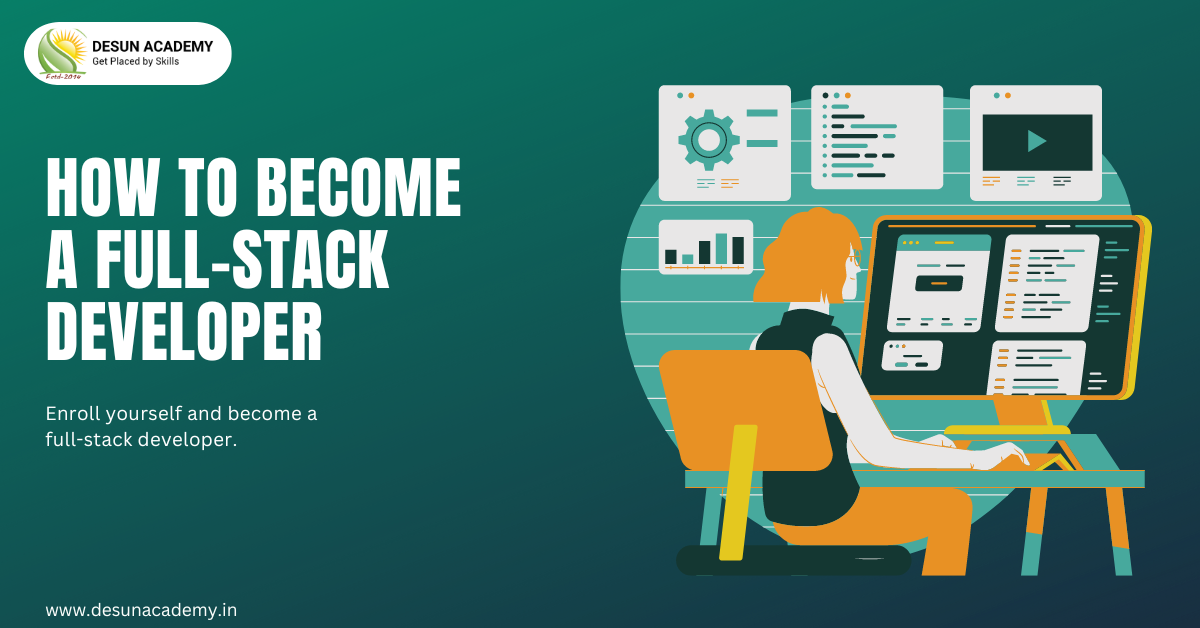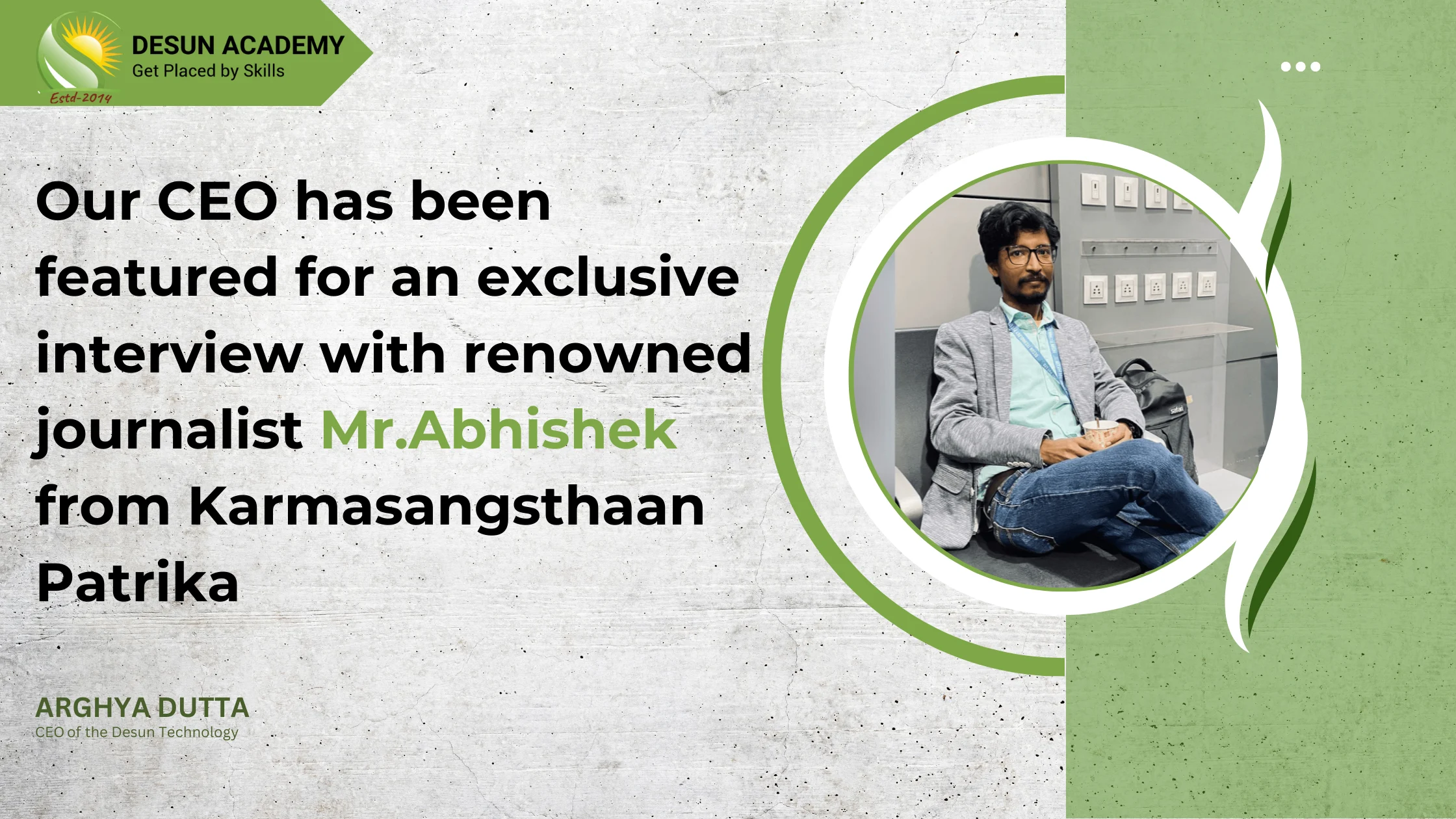
How to Become a Full-Stack Developer
How to Become a Full-Stack Developer
Are you worried about how to become a Full-Stack Developer? If yes, then this article is for you. Becoming a full-stack developer is an exciting and rewarding career path in the tech industry. As businesses increasingly rely on digital platforms and applications, the demand for skilled professionals who can handle both front-end and back-end development has skyrocketed. To embark on your journey towards becoming a full-stack developer, there are several key skills you need to acquire. Firstly, a strong foundation in programming languages such as HTML/CSS, JavaScript, and Python is essential. These languages form the building blocks of web development and understanding them will be crucial in your journey.
In addition to programming languages, familiarity with popular web development frameworks like ReactJS or AngularJS can greatly enhance your skill set. These frameworks provide efficient tools and libraries that streamline the development process and enable you to easily build dynamic user interfaces.As a full-stack developer, having expertise in both front-end and back-end development is important. Front-end skills involve designing user interfaces that are visually appealing and user-friendly. This includes knowledge of CSS frameworks like Bootstrap or Materialize CSS for responsive design.
What is a Full-stack developer?
You must familiarize yourself with the front end and back end of web development in order to become a full-stack developer.
All the components of a computer program that users directly interact with are referred to as the front end, sometimes called the client-side or customer-facing side. The back end, on the other hand, refers to all the back-end technology that processes business logic, carries out user requests, and keeps sensitive data safe.The bulk of the unseen back end of an iceberg is located well below the water’s surface, while the front end can be thought of as its tip. The visible portions of a website are designed and optimized by front-end developers, who also ensure that these elements are responsive across various viewing platforms, including PCs, tablets, and smartphones. To create an interesting website, they employ client-facing programming languages like HTML, CSS, and JavaScript.
However, back end development calls on programmers to create and improve the internal software that runs a business’s servers, databases, and proprietary applications. The paths that carry information to and from users who control front-end interfaces are developed by back-end developers. Full-stack development is useful in this situation. The term “full stack” describes the front-end and back end architecture of a website or application as a whole. Full stack specialists can handle all sides of the hypothetical equation, as one might anticipate.
What does a Full-Stack developer do?
Full-stack developers have an amazing degree of career flexibility because of their practical understanding of both front-end and back-end programming. Without any assistance, they are able to create websites and online apps. They can also work freely on large-scale projects, providing assistance wherever needed.
seasoned Not only may full-stack developers save businesses money, but they are also extremely important because of their ability to support and interact with all members of a large team. Full-stack engineers are capable of writing code, managing networks, working with databases, assisting clients, and even going into sales. This is why it’s important to comprehend every aspect of a project.
What You Need to Know to Become a Full-Stack Developer
“How long does it take to become a full-stack developer?” is a question that many ask. The amount of time required to become proficient in both front-end and back-end abilities is the answer. To provide you with a practical understanding of the skills required to become a full-stack developer, we have broken down the necessary knowledge into manageable chunks. Enroll in web development classes to further your career in the field.
-
1. Choose Your Front-End Developer Stack:
The first step in learning which front-end developer stacks to study is to determine how to become a full-stack developer from the beginning.
Although the fundamental building blocks of web development are HTML and CSS, you also need to understand React or Angular, both of which are based on JavaScript. Gaining knowledge about APIs is also necessary to strengthen your position as a full-stack developer.
-
2. Boost Your Ability in Front-End Development:
Try utilizing HTML and CSS to create basic websites once you have mastered their fundamentals. This will help you evaluate your front-end development abilities. Learn jQuery before delving into more complex JavaScript. Learning Angular or React is a significant task. For now, a working knowledge will have to do. Take on tasks to improve your abilities.
-
3. Select Your Stack of Back-End Developers:
Selecting your back-end stack is the next step in becoming a full-stack web developer. Starting with Node.js and Express.js is a good idea. Both are necessary for back-end programming. Since back-end optimization directly affects an application’s efficiency, back-end development is one of the most crucial aspects of the web development process.
The ability to program in languages like Python, PHP, and Java is essential for back-end development. These will guarantee that the application continues to operate without any issues.
-
4. Become More Skilled in Back-End Development:
You have to keep in mind that learning back-end abilities takes time. It takes time to hone the skills, which begs the issue of how long it takes to become a full stack developer. As you work on more projects, you will gain a firm grasp of the abilities. Creating back-end Python, C#, or PHP code can improve your resume and make you a more competitive full-stack developer.
-
5. Essential Database Knowledge:
In addition to back-end expertise, database knowledge is essential. Oracle Database, MongoDB, MySQL, and SQLite are a few of the frequently selected options. A developer pulls data from the database and develops code to accomplish relational mapping. Data concerning caching solutions such as Varnish and Redis can be effectively integrated with your database expertise.
-
6. Required Server/Hosting Skills:
Having a working knowledge of web hosting is essential for learning full stack development. Users can access your produced website or application via the World Wide Web thanks to hosting platforms. A few well-known servers that you should become familiar with using are Microsoft Azure, Amazon Web Services, Google Cloud Platform, and Heroku.
-
7. Select the Full Stack Developer Frameworks You Want:
You will be spending a lot of time with front-end frameworks. Gaining proficiency in anybody can help you get many jobs. React, Django, and Angular are a few well-known ones. Frameworks are used by developers to optimize and build websites. Angular is used by full stack developers and is helpful for single-page applications. Django is a Python program that works with databases such as Oracle and MySQL. Symfony can assist in building reliable applications, even though React helps generate user interfaces. Select your framework based on your personal preferences.
-
8. Develop Your Version Control Command:
Every application goes through several iterations before being made available. Version management is necessary for full-stack developers; GitHub is the most widely used tool for this purpose. The development team can contribute code to the ongoing project with version control because they don’t have to worry about overwriting the source code. You also need to learn Git and Subversion as additional version control languages. For a full-stack developer, using version control skills is rather typical.
Determine and Close Your Skills Gap Using Industry Needs
Given the rapid advancement of technology, full-stack developers must recognize the competencies they possess. The greatest method for learning full-stack web development is to conduct in-depth market research. Enumerate your skills as a front-end and back-end developer. Examine the abilities you should acquire in order to streamline and improve the efficiency of your work.
The following actions can help you determine your skills gap:
-
1. Jot down the abilities required to be a full-stack developer.
-
2. Examine market trends to determine what “future skills” you need to acquire.
-
3. Examine the abilities you now possess.
-
4. Utilize data to help you plan how to close the skills gap.
-
5. Continue to analyze the skills gap as you have been doing.
-
6. You will always be able to focus on the industry requirement if you follow these 5 stages.
Begin Learning in a Format That Works for You
Several educational paths could lead you to work as a full-stack developer. As a beginner, though, you could become entangled in a plethora of misunderstandings at this period. For this reason, you can select from the resources below to assist you in selecting the format that works best for you.
-
Boot camps
-
Self-guided courses
-
Degree programs
-
Books and tutorials
Conclusion:
There will always be a need for full-stack developers as new technologies emerge. Anyone interested in pursuing a career in software development should possess both front-end and back-end programming skills, as this profession offers a wealth of opportunities. Enrolling in KnowledgeHut’s Full-Stack Developer certification program will help you get started on your path to becoming a full-stack developer.
To know more visit us.








